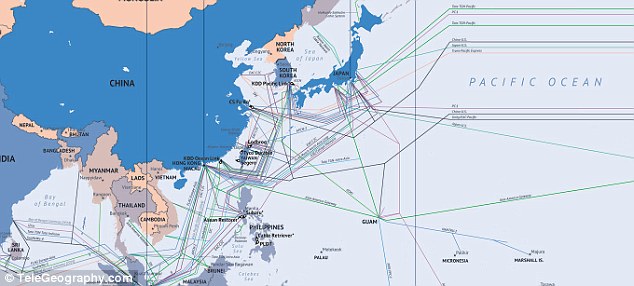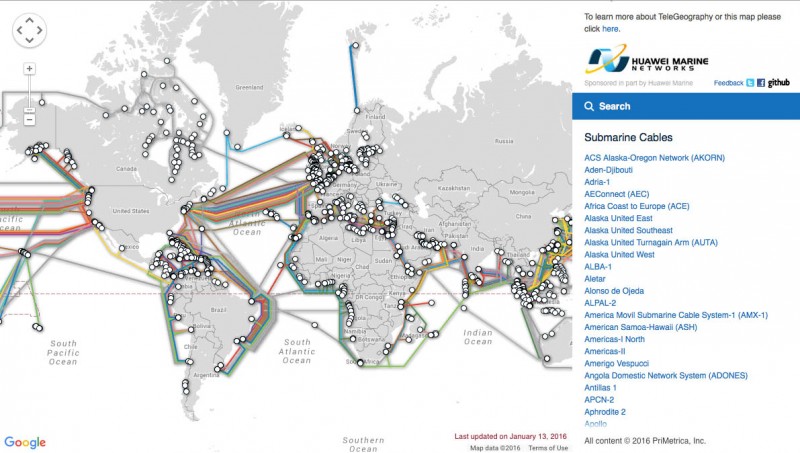
Figure 1. TeleGeography’s Submarine Cable Map Shows 285 cable networks, 2014. Open Source Image.
In Friedrich Kittler’s Gramophone, Film, Typewriter he begins with a discussion on fibre optic networks where “people [are] hooked to an information channel that can be used for any medium—for the first time in history” (Kittler, 1999, introduction). He further states that pleasure is a by-product of our internet wanderings where people are free to channel-surf among entertainment media. His musings are particularly intriguing as our information highways are very real, and ever present. Kittler’s ideas are especially pertinent with current conversations at climate summits discussing global warming or communication regulations (see Fig. 1-2). In tandem with these ideas is this interactive map which shows the absurd lengths we go to communicate with each other across the globe. These cables (which centuries ago were instead horses) send messages to locations and places we can often only dream about- in this way they become a communication device that is quite beautiful, even elegant. Perhaps these artifacts are veiled in political and social nuances that align directly with what Kittler describes as the power of authority.

Figure 2. TeleGeography’s Submarine Cable Map, World View, 2016.
Works Cited
Kittler, Friedrich, Geoffrey Winthrop-Young, and Michael Wutz. “Film, gramophone, typewriter.” (1999).
Works Consulted
Mitchell, WJ Thomas, and Mark BN Hansen, eds. Critical terms for media studies. University of Chicago Press, 2010.
Shanken, Edward A. “Art and electronic media.” (2009).
Add yours Comments – 1
Photographer Trevor Paglen’s shoots underwater telecommunication cables that are tapped by the NSA. Interestingly, further to my post, Paglen discusses how the vast majority of “internet traffic, telephone calls, browsing data, and emails cross the world run along seafloor fiber optic wires.”
https://youtu.be/9Igfu0VwdkQ
http://www.vice.com/en_ca/read/the-map-is-the-territory-0000742-v22n9
http://www.paglen.com